This was a banner year for Latino chefs, but not just in the kitchen. Latin chefs hit the publishing industry, releasing an unprecedented number of cookbooks. From their titles (in English and Spanish), to their scope (from street food to molecular-influenced cuisine), to their sheer size (some over 900 pages) — as well as their brisk sale — they've affirmed that a gnawing hunger for more nuanced volumes about Latino food exists. Here's a round up of just a few of our favorites.
Whether you're giving or getting, these cookbooks won't just lead to delicious meals. One of the distinguishing characteristics shared by all of our favorite Latino cookbooks from 2012 is their emphasis on culture, memory, people, and place. “When it comes to cookbooks, just recipes aren't enough anymore,” says Nora de Hoyos Comstock, the founder of Las Comadres, a community building group that organizes an annual conference for Latino writers. “The memoir element is often more important than the recipes.”
Comstock, who doesn't cook, isn't alone in buying cookbooks “just” for their stories. Aurora Anaya-Cerda, owner of the Manhattan-based La Casa Azul Bookstore, says that sales of Latino cookbooks are up, and her customers seem especially interested in cookbooks that incorporate family stories alongside meal prep instructions.
In our 2012 picks, you'll find cookbooks where stories and photos share space with recipes rooted in specific places. Each brings the past and present together in a way that will likely stir up your own memories and inspire you to make new ones, in the market, in the kitchen, and at the table.
Next, the top cookbooks of the year. [pagebreak]
Tacos, Tortas, and Tamales: Flavors from the Griddles, Pots, and Streetside Kitchens of Mexico
 “So evocative is the sound [of the melancholy whistle of the camote man's pushcart] that my mom made it her… ringtone,” writes Santibañez in the introduction to his cookbook, which doubles as a guide to Mexican street food (or, as he calls it, “urban food.”). If you've ever heard the sound of the sweet potato vendor's whistle, the memory is enough to send you back to Mexico. If you haven't heard it, Santibañez's description, along with his narrative about the juicy, spicy, sizzling flavors of food sold street-side, and the photos of the smiling cooks who serve up these plates, will make you want to book a ticket ASAP.
“So evocative is the sound [of the melancholy whistle of the camote man's pushcart] that my mom made it her… ringtone,” writes Santibañez in the introduction to his cookbook, which doubles as a guide to Mexican street food (or, as he calls it, “urban food.”). If you've ever heard the sound of the sweet potato vendor's whistle, the memory is enough to send you back to Mexico. If you haven't heard it, Santibañez's description, along with his narrative about the juicy, spicy, sizzling flavors of food sold street-side, and the photos of the smiling cooks who serve up these plates, will make you want to book a ticket ASAP.
If jetsetting off to Mexico isn't in the cards, Santibañez gives you all the tips, tools, and resources you'll need to make your own tacos, tortas, and tamales at home, as well as some sweets, cocktails, hot drinks, and refreshing aguas. For the most part, this cookbook is more didactic than intimate, but occasional personal anecdotes (his grandma made "the best" nopales) and mentions of his favorite spots give an unmistakeable sense of place.
Lorena Garcia's New Latin Classics: Fresh Ideas for Favorite Dishes
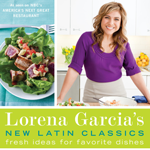 Though Garcia's New Latin Classics was actually published in late 2011, it continued to sell well in 2012. In Garcia's case, her stint as co-star of America's Next Great Restaurant and cheftestant on Top Chef Masters likely helped push sales. New Latin Classics is chatty and friendly, as well as accessible. “Food doesn't have to be expensive or fancy,” Garcia writes in the introduction, adding, “the gift of a home-cooked meal is always met with appreciation and gratitude.”
Though Garcia's New Latin Classics was actually published in late 2011, it continued to sell well in 2012. In Garcia's case, her stint as co-star of America's Next Great Restaurant and cheftestant on Top Chef Masters likely helped push sales. New Latin Classics is chatty and friendly, as well as accessible. “Food doesn't have to be expensive or fancy,” Garcia writes in the introduction, adding, “the gift of a home-cooked meal is always met with appreciation and gratitude.”
For Garcia, cooking is an expression of love and a chance to share her Venezuelan cultural and culinary roots with family and friends. In this cookbook, she teaches readers how to make comfort foods that pop, thanks to “the soul of Latin food… flavor.” Recipes and even the book's ingredient glossary are all written in the first person, full of personal touches.
Gran Cocina Latina: The Food of Latin America
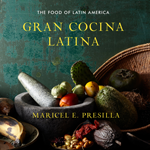 Presilla's Gran Cocina Latina is our favorite cookbook of the year. For one thing, it's encyclopedic in breadth, offering recipes spanning all of Latin America and ranging from the simplest and best-known dishes to the most labor-intensive and obscure. If you had to choose just one Latin cookbook to own, this would be the one.
Presilla's Gran Cocina Latina is our favorite cookbook of the year. For one thing, it's encyclopedic in breadth, offering recipes spanning all of Latin America and ranging from the simplest and best-known dishes to the most labor-intensive and obscure. If you had to choose just one Latin cookbook to own, this would be the one.
What makes Presilla's book even more compelling is the story behind it. The recipes presented in this 901-page volume were gathered over the course of her own journeys through Latin America. Presilla, who was born in Cuba, quickly discovered during her travels that food is always political and that her wanderings and ad-hoc apprenticeships in hosts' kitchens were an unintentional but inevitable expansion of her own identity. The result is a lovely travelogue and cookbook that not only serves as evidence of Presilla's extensive travels, but also gives homage to the people who opened their kitchens to her and shared their knowledge, skills, and recipes.
Next, more top books. [pagebreak]
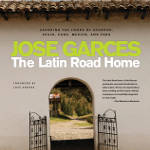
The Latin Road Home: Savoring the Foods of Ecuador, Spain, Cuba, Mexico, and Peru
Not as long (nor as heavy!) as Presilla's Gran Cocina Latina, Garces's The Latin Road Home shares Presilla's journey theme. Garces takes the reader along through five countries that have influenced his life and his cooking; in the process, he presents 100+ recipes that are adapted for the home cook.
As he travels, his wonderment and appreciation for each country and its qualities are infectious and informative. The book is divided into five sections — Ecuador, Spain, Cuba, Mexico and Peru — which contain four family menus, each named after the dish’s city of origin, as well as a few essentials for each country. There are also more than 100 beautiful, bright photos, plus personal anecdotes that help the reader get a better sense of place.
En la Milpa
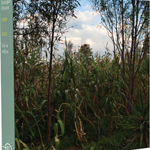
It's amazing Olvera managed to crank out a cookbook at all, much less such a coffee-table-worthy one, given that his culinary empire has begun expanding beyond his perennially popular restaurant, Pujol, in Mexico City.
Olvera is often cited as following in the footsteps of Ferran Adria, but in this cookbook (available directly through his web site), he reveals the other influences that inform his food philosophy, namely, the farmers and producers who provide the ingredients he turns into ethereal, experience-based meals, and the land that gives rise to those fruits and vegetables, grains and fungi. There are far fewer recipes—just 40—in this book than the others, but getting a glimpse into the mind of Olvera is worth the retail price.
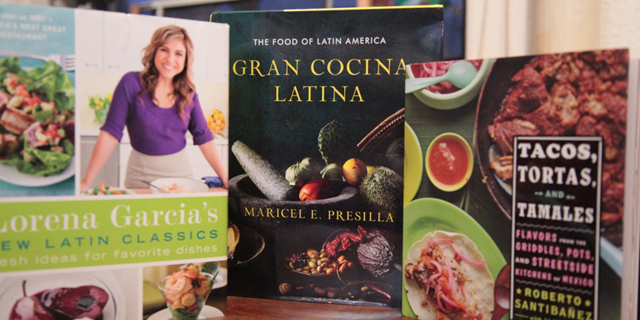

![Making Mealtime Matter with La Familia: Easy Sofrito [Video]](https://thelatinkitchen.com/wp-content/uploads/2015/10/sofrito-shutterstock__0-500x383.jpg)
![Easy Latin Smoothies: Goji Berry Smoothie [Video]](https://thelatinkitchen.com/wp-content/uploads/2015/12/goji_berry-shutterstock_-500x383.jpg)
















![Fun and Fast Recipes: Fiesta Cabbage Salad [Video]](https://thelatinkitchen.com/wp-content/uploads/2015/11/fiesta_cabbage_slaw-shutterstock_-500x383.jpg)









